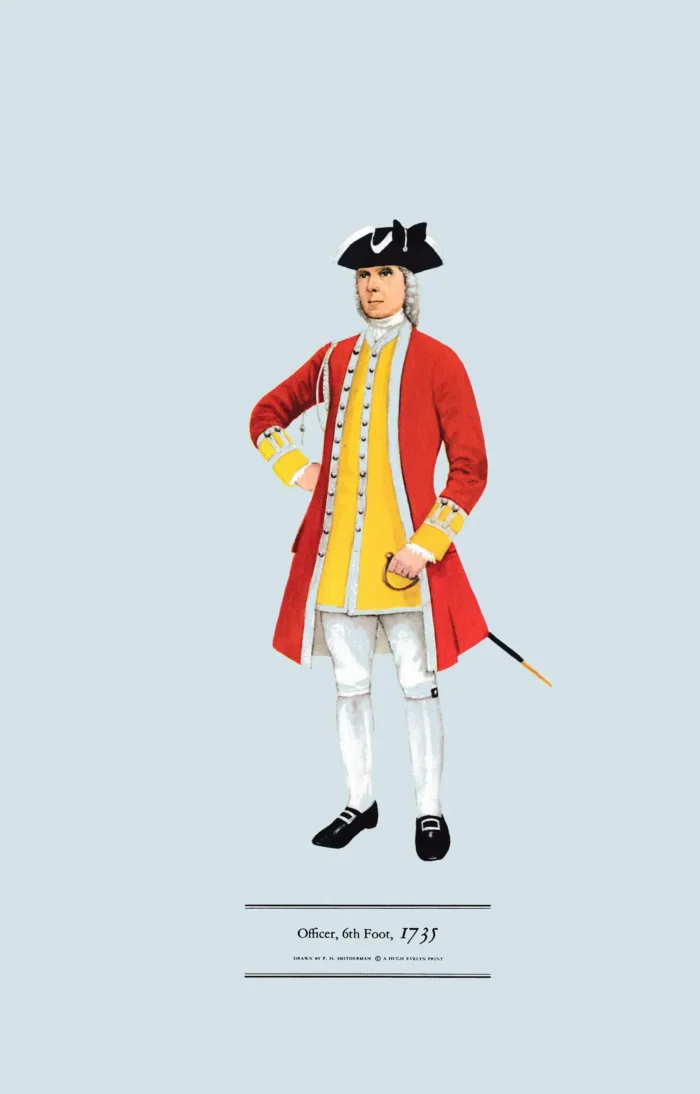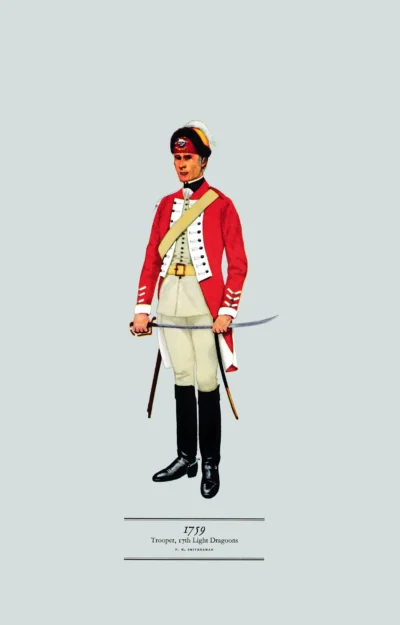Officer, 6th Foot, 1735 (Royal Warwickshire)
£12.50
The Royal Warwickshire Regiment merged into 2nd Battalion, The Royal Regiment of Fusiliers in 1968 (scroll down for a more detailed Description)
Published 1965 by © Hugh Evelyn Limited; drawn by Colonel Philip Henry Smitherman (1910-1982), Royal Corps of Signals
Size: c. 24.5 x 37.5 cm [9 ½ ″ x 14 ½ ″] (may vary slightly from printers’ cut 50 years ago)
Printed on on medium cardstock weighing 144 g/sm2 faced in light greyish blue (RGB c. d4e1e8)
Print is STANDARD size – shipping is the same for 1 to 10 prints (based on largest print size in your order) – see Shipping & Returns.
In stock
Description
The Royal Warwickshire Regiment, previously the 6th Regiment of Foot, was a line infantry regiment in continuous existence for 283 years. It saw service in many conflicts. In 1963, it was re-titled the Royal Warwickshire Fusiliers and became part of the Fusilier Brigade. In 1968 it was amalgamated into a new infantry regiment, the Royal Regiment of Fusiliers, becoming the 2nd Battalion. This officer is wearing neither gorget nor sash, so is off duty. His elegant coat bears little resemblance to those worn by the men of the regiment. He is wearing an aiguillette on his right shoulder – worn as the mark of a commissioned or non-commissioned officer in the infantry and was worn by all ranks in some cavalry regiments. The origin of these shoulder knots is obscure: from picketing ropes for horses (the pegs are like the pegs used on picketing ropes) and ropes for tying hay by foraging parties. They were worn by servants in private houses and still appear on some royal liveries. Perhaps they were merely decorative additions to dress, added during a time when such decoration was not considered unmanly. They disappeared in the Napoleonic wars but revived in some cavalry regiments later and were later worn by officers and NCOs of the Household Cavalry and some staff officers. The 6th Foot were another of the ‘Six Old Corps’ who retained their ancient badge of an antelope on their caps. They won this badge at Saragossa in 1710 where they won a resounding victory over French and Spanish cavalry, capturing, among other things, a Moorish flag bearing the device of an antelope.
Source: Portrait of an officer of the Regiment.
Additional information
| Weight | 0.0131 kg |
|---|---|
| Dimensions | 23 × 37 cm |





